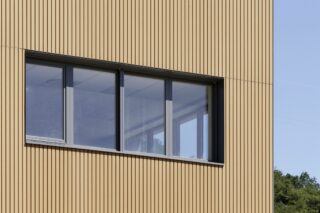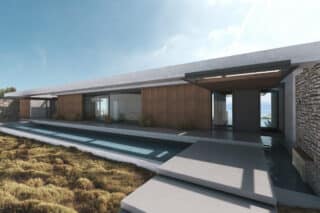Philip Johnson’s Glass House, built in 1949, broke down the barriers between public and private. The translucent structure’s influence still dominates the design world. You can see it in the obsession with glass shower stalls and in the eschewal of ornamentation, and the emphasis on function in domestic spaces.
Indeed, after 50 years, designers still are finding more to say on the matter. Case in point is the Infinity Kitchen, a glass assemblage of kitchen cabinets, stove and disposal pipes that debuted at the 2016 Venice Architecture Biennale as part of the China House Vision exhibit in the Palazzo Ca’ Tron.
Designed by the Dutch architecture firm MRDV, the Infinity Kitchen is intended to get consumers to focus on the essentials. “If we imagine everything is transparent clear and clean, doesn’t it mean that the only thing that is colorful and visible is our food,” describes MVRDV co-founder Winy Maas. “Doesn’t it then imply that we are encouraged to love the food, in that way, and that maybe it even becomes more healthy, if not sexy?”
Built in a series of attached modular units, almost every element is transparent. There are even transparent garbage bins to better enable users to sort their garbage and to actually see how much is being generated. To be sure, there are a few opaque components, such as a stainless steel dishwasher and pans, but Maas says that his firm is exploring ways to make the entire ensemble see-through.
To hear Maas tell it, kitchens are highly inefficient spaces, and as a result, food preparation and storage suffers. The Infinity Kitchen seeks to rectify this sorry state of affairs by enabling you to see how clean pans and surfaces really are, how much food is on hand, and to better spot when your vegetables have gone rotten.
The Infinity Kitchen is only the latest in a series of transparent interventions by MRDV. In Amsterdam, the firm recently completed Crystal Houses, a structure with a translucent façade that mimics its traditional brick-and-mortar neighbors with glass bricks, glass windows frames and glass architraves. This past June, in Hong Kong, the firm also finished an office with all glass interiors and furniture.
Translucency is not just another aesthetic for Maas—he touts it with a religious fervor. “Imagine if not only our kitchens were transparent, but the walls through to the neighbor and the next neighbor even,” he says, “This would create infinite perspectives in our cities. It would make within our claustrophobic environments possibly a view, into the direction of the mountains or the sea.”












